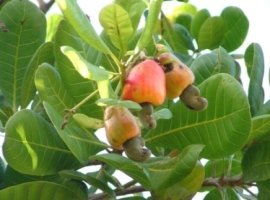Cajueiro Cajueiro is a tropical plant native to Brazil and is in the same family as mango. The fruit is red and contains the cashew nut. The nut is used as a food. The bark, fruit, nuts and resin of the tree are used medicinally. Cajueiro is a tropical plant native to Brazil and is in the same family as mango. The fruit is red and contains the cashew nut. The nut is used as a food. The bark, fruit, nuts and resin of the tree are used medicinally. This plant contains naturally ocurring analogs of the new diabetes drugs pioglitazone (Actos) and rosiglitazone (Avandia), without the potentially damaging effects to the liver nor weight gain. It is used in tribal medicine in South America as a contraceptive, snakebite cure, and for treatment of parasites. Cajueiro's Health Benefits
Considerations In UseAvailable as a tincture. If using for diabetes, be patient. Effects may not be observed for 3-4 weeks. Diabetes is a complex disease state. Type II is caused by insulin resistence and weight gain. Insulin, made in the pancreas, must be able to bind to cells in the body so as to allow glucose in the blood to enter the cells and become metabolized. Without this process, blood sugar becomes elavated. In Type I, however, there is a lack of insulin production from the pancreas resulting in elevated blood sugars. As a result, Cajueiro should only be used in Type II diabetes.Remember, when treating any condition, lifestyle changes must be put in place. Thinking that a pill or herb will cure every condition, especially DM Type II is a little short sighted. Start an exercise program with the permission of your doctor. Losing even 10 lbs will affect your overall health, 20 or 30 lbs down and you may be able to cut back on medication. The oil of the nut shell may be caustic to skin. Never eat cashews raw..only roasted. Discuss this alternative medicine treatment with your physician or endocrinologist if you decide to try this. If you are already on medications such as metformin, actos or avandia, you may lower your blood sugar too much by adding in Cajueiro. Hypoglycemia, when severe (below the level of 50) can lead to loss of conciousness and possible seizures. | | |
|
Information
Treatment
How To
Legal
| ||
|
| Home Page | Privacy Policy |Medical Disclaimer |Written by Mary Kay Betz |
Copyright©
2008-2012
| ||

